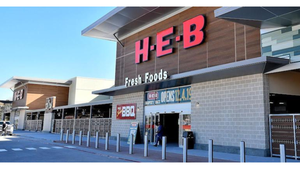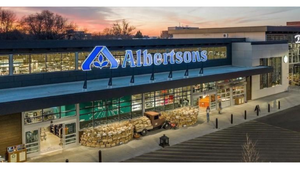Technology Toolkit
For just about every business challenge retailers face, there is a technology solution. For example, Price Chopper Supermarkets, Schenectady, N.Y., has found that e-procurement services that conduct reverse auctions are able to drive down the cost of food products and store equipment. In Hawaii, Foodland Super Market has been able address store performance issues via the insights provided by a business
December 13, 2010
For just about every business challenge retailers face, there is a technology solution. For example, Price Chopper Supermarkets, Schenectady, N.Y., has found that e-procurement services that conduct reverse auctions are able to drive down the cost of food products and store equipment. In Hawaii, Foodland Super Market has been able address store performance issues via the insights provided by a business intelligence system.
For Family Dollar, technology has turned the 7,000-store chain from a vanilla operation to one that delivers store-specific merchandising. Other retailers are bolstering service in service departments with advanced queuing systems.
Cut Product Costs via Reverse Auctions
REVERSE AUCTIONS have long been a staple of the Internet, allowing fast and efficient bidding exercises resulting in lower prices for products and services. Price Chopper Supermarkets, Schenectady, N.Y., is among the retailers that have employed this e-procurement process to drive down the cost of products resold in their stores as well as equipment used to run their stores.
For the past three years, the chain, which operates 128 stores in the Northeast, has tapped the reverse auction and aggregation capabilities of TopSource, Braintree, Mass., a division of Topco Associates, and a reverse auction service from Intesource, Phoenix. This year, the chain will do as many as 200 reverse auctions between the two services, the majority through Intesource.
“It's a great opportunity to lower costs without sacrificing quality,” said Mark Chandler, Price Chopper's vice president, supply chain. “If a retailer is not leveraging this capability, they are certainly missing something.”
Price Chopper has used Intesource to procure not-for-resale items, such as office supplies, refrigeration equipment, shopping bags, transportation services, and HR software. Intesource is also a source of for-resale perishable products including bakery, produce, seafood, meat and floral.
Price Chopper also leverages TopSource's reverse auction capabilities, which are part of their aggregated buying efforts consolidating the buying power of multiple Topco-member food retailers. Through TopSource, Price Chopper has been able to procure such not-for-resale items as IT equipment, walk-in coolers, packaging, gloves, food trays, cups and lids.
— Michael Garry
Analyze Performance With Business Intelligence Tool
THERE ARE MANY business intelligence (BI) tools available to food retailers, but Wendy Reeve, was looking for one that her buyers and category managers could use easily and effectively to analyze business performance. “Rather than buy a Cadillac BI tool and use 1/100th of its capability,” she wanted something “really specific to us and scalable,” she said.
Reeve, director of business intelligence for Honolulu-based Sullivan Family of Companies, which operates Foodland Super Market, a chain of 30 stores in Hawaii, among other retail outlets, found an answer with software developer Insight Industries. Working with Foodland, Insight Industries developed the Web-based Haystack Category Analyzer BI tool, a data mart with a Web-based front-end, which the chain's business executives have been using for the past two years.
In the past, Foodland's buyers and category managers did not have direct access to the product performance information they needed to make fact-based decisions; instead they would rely on the IT department to generate “static reports” that did not lend themselves to deeper investigation. With category analyzer, they have their own tool that “quickly identifies exceptions and causes, and allows them to drill down and take action,” said Reeve. The tool has between 30 and 40 users.
Based on movement data, Category Analyzer offers users about 60 key performance indicators (KPIs) that can be analyzed in Microsoft Excel. These include unit movement by price type (ad, TPR, regular), margin before ad (going in margin), allowances, billbacks and rebates. Comparisons are made by store and store groups, and broken down by week, quarter and half, compared to the previous year. “We're adding more and more measures to the system,” said Reeve. Though Foodland has a loyalty card, the system does not look at market basket data at this time.
Buyers leverage Category Analyzer to access information on specific vendors, such as allowances or performance in a category, and use that in negotiations. “The worst thing is when vendors know more than you do about your business,” said Reeve. They also use the system to tweak margins, identify distribution voids, and change product mix, among other applications. “Our users have really found this helpful,” said Reeve.
The subscription price of the system is based on the number of stores in the chain; it would cost about $8,000 per month for 25 stores, said John Harrison, co-founder of Insight Industries.
— Michael Garry
Transition to Customer-Focused Merchandising
FOR MUCH OF its half century in business, Family Dollar Stores, Matthews, N.C., was a “one-size-fit-all” operation with the same product assortments in all of its stores. But as the chain grew from 2,000 to 7,000 stores, it could no longer avoid the reality that “customers wanted tailored assortments,” said Scott Zucker, Dollar General's vice president, IT solutions delivery.
Speaking earlier this year at an Aberdeen Group conference in New York, Zucker explained how Family Dollar adopted a customer-driven merchandising strategy that has resulted in clustering of stores and assortments designed for each cluster.
To understand its customer base, Family Dollar initially invested in market research from Nielsen, IRI and NPD, which was integrated into its business processes. The company also adopted demand intelligence systems such as demand forecasting, market basket analysis and store clustering. SAS became Family Dollar's merchandising planning partner.
Last year, Family Dollar implemented assortment and space planning systems while this year the chain has been focused on a price optimization system from Revionics.
One example of how this technology has been used is planogram creation in the pet category. In the past, the chain would generate five pet-category planograms for 7,000 stores. Now, 90 planograms are created for the various clusters of stores, including urban and rural clusters. The upshot was that the pet category outperformed the company average in a number of key shopper metrics, including trips per buyer (19% better), dollars per trip (28% better) and dollars per buyer (52% better).
— Michael Garry
Improve Service With Queuing System
COMPETING WITH THE LIKES of Wal-Mart Stores and Roundy's Supermarkets, Skogen's Festival Foods, a 14-store chain based in Depere, Wis., is trying to maximize its customer service with a queuing system in its service departments at three stores. Skogen's is looking at putting the system in more stores in 2011, said Lars Batzel, the retailer's director of deli.
Shoppers entering a line of service areas — deli and meat/seafood — can go up to a ticket-dispensing device in each department and receive a ticket with a number and an estimated waiting time, said Batzel. Shoppers are alerted by audio and by an overhead monitor in each department that they are ready to be served.
The system tracks the number of shoppers on line and reports that number to a sign in the back room, prompting employees that more help may be needed, noted Batzel.
The system can also be configured to notify a manager to send over more employees if the number of shoppers exceeds a pre-set threshold. Meijer, Grand Rapids, uses it in this manner at the deli department at 142 stores, said Alex Borbely, retail vice president of sales for Q-Matic, Fletcher, N.C., provider of the queuing system. (Meijer did not respond to a request for comment.) It can also supply wait time information to labor scheduling systems, and measure defection rates.
“The system is designed to improve the customer waiting experience and increase the perception that the wait is not as long as they expected,” Borbely said.
— Michael Garry
Test Carbon Dioxide Refrigeration
ONE OF THE REASONS that Food Lion, Salisbury, N.C., was among the four corporations (including Giant Eagle) to receive the 2010 U.S. Environmental Protection Agency's Montreal Protocol Award in September is its commitment to exploring alternative refrigeration systems.
Food Lion was the first member of the EPA's GreenChill program to pioneer the new generation of secondary loop refrigeration systems, opening one store in 2006 with a medium-temperature system, installing a low-temperature system at a second store that year, and opening a third store in 2008 with both systems. The low-temperature systems all incorporate carbon dioxide as a secondary refrigerant, significantly reducing the use of conventional HFC refrigerant that has a vastly higher global warming potential.
In 2009, the chain opened two stores with a cascade refrigeration system and a third such store in July of this year. All use carbon dioxide for both medium- and low-temperature cases, greatly lowering the amount of conventional refrigerant used.
Because the conventional refrigerants (R-507 and R-407A) have been limited in use and kept in the motor room, their leak rate in the carbon dioxide systems has been just 1.79% since July 2008, said Wayne Rosa, Food Lion's energy & maintenance manager, at the Food Marketing Institute Energy & Store Development Conference in September.
The stores experienced a 42.7% leak rate of carbon dioxide (looking at conventional sources of leaks), but the impact was mitigated by the low cost of the gas ($1 per pound) and its negligible environmental impact. Moreover, the leaks took place over an extended period of time, Rosa said. Overall, the maintenance costs (refrigerant, labor parts) for the carbon dioxide systems has been 49% less than that of conventional stores, he added.
Installation costs, except for added wiring, were the same for carbon dioxide systems as for conventional DX systems. Back-up generators were another cost for the carbon dioxide systems, though their energy costs have run 2% to 5% lower than in regular systems. But the overall payback period for a carbon dioxide system is extensive because of its 20% to 40% higher up-front cost.
Rosa said Food Lion was testing carbon dioxide systems to be ready in case HFC refrigerants are regulated.
— Michael Garry
You May Also Like




